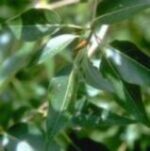| Common Name: |
Balsam Fir |
| Other Names: |
Balm of Gilead |
| Botanical Name: |
Abies balsamea |
| Genus: |
Abies |
| Family: |
Pinaceae |
| Native Location: |
C and E Canada, and NE USA |
| Cultivation: |
Deep, moist, well-drained, slightly acidic soil in sun or shade. Young trees and A. balsamea Hudsonia Group are more tolerant of alkaline conditions. Firs are sensitive to atmospheric polution. They may also be damaged by late spring frosts as the new shoots appear earlier in mild areas than they would in the wild. Planting in light shade, rather than full sun, minimizes damage. Maintain a single leading shoot by cutting out competing shoots flush with the main stem in spring. Firs may be attacked by sap-sucking adelgids, and are prone to dieback and rust caused by fundal infections. |
| Propagation: |
By seed sown in spring. |
| Harvest: |
Leaves and young shoots are collected in spring. Bark is removed throughout the year. Resin is tapped from 60-80 year old trees, in spring, for distillation of oil. Oleo-resin is collected at any time from blisters on the trunk. |
| Height: |
15m (45ft) |
| Width: |
5m (15ft) |
| Hardiness: |
Z3-6 |
| Parts Used: |
Leaves, bark, oleo-resin, oil. |
| Properties: |
An aromatic, astringent, antiseptic herb that stimulates circulation and acts as a diuretic. |
| Medicinal Uses: |
Internally in commercial mixtures for diarrhea, but in excess is purgative. Externally, in bath extracts for rheumatic pain, and as a mouthwash. Oleo-resin is known as "Canada Balsam" or "Spruce gum"; it is use for chewing, and in traditional N American medicine for chest infections, venereal disease, wounds, and burns. |
| Culinary Uses: |
Shoot tips are used for tea. |
| Economic Uses: |
Oleo-resin is used in food flavoring, and as a lens cement and a sealing agent for mounting microscope slides. Oil is used in dentistry in sealing preparations, and as a fixative and for fragrance in soaps, cosmetics, and perfumes. |
| Bibliography: |
Encylopedia of Herbs by Deni Brown Copyright ©: 1995, 2001 Dorling Kindersley Limited pps. 96-97
|

